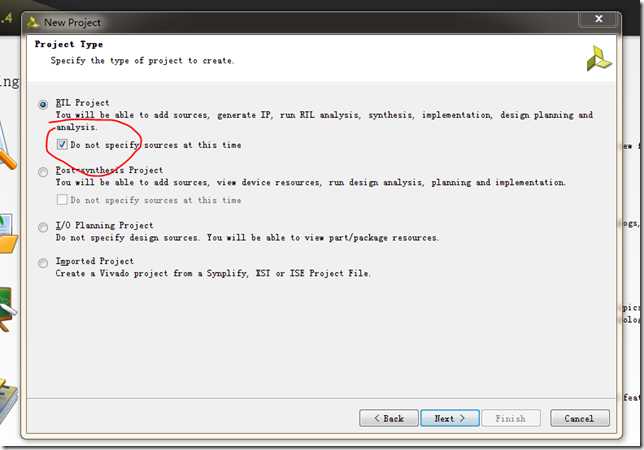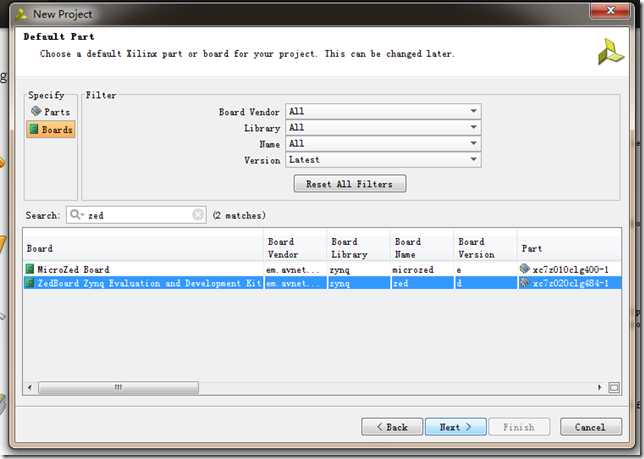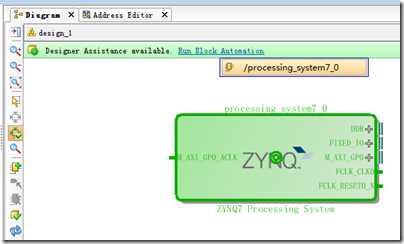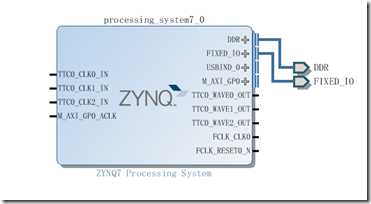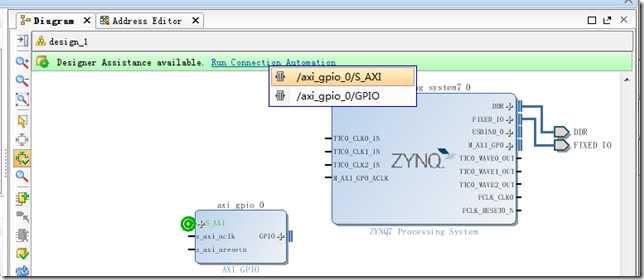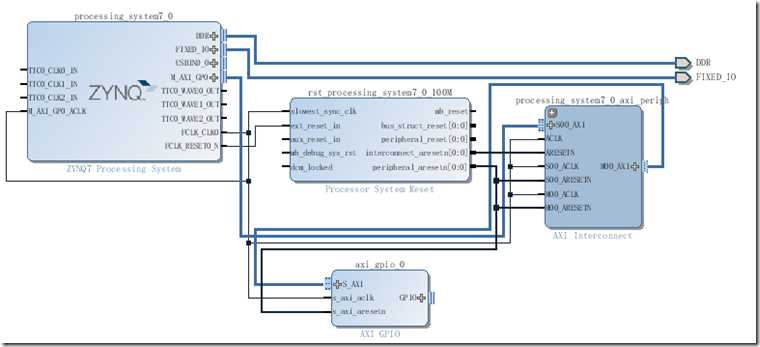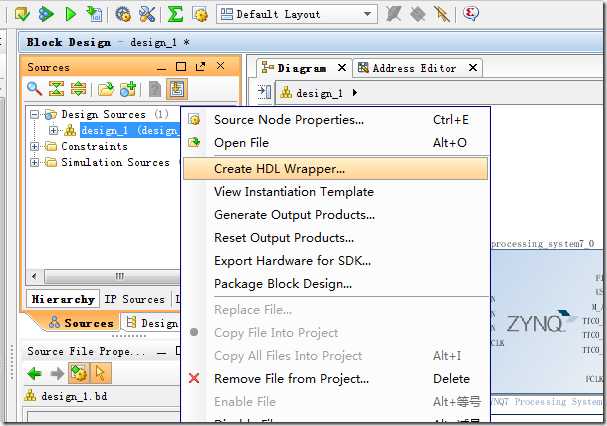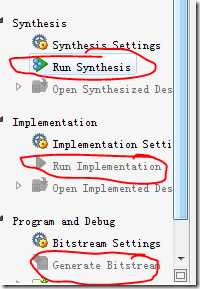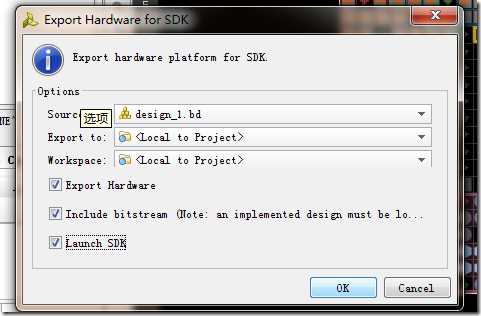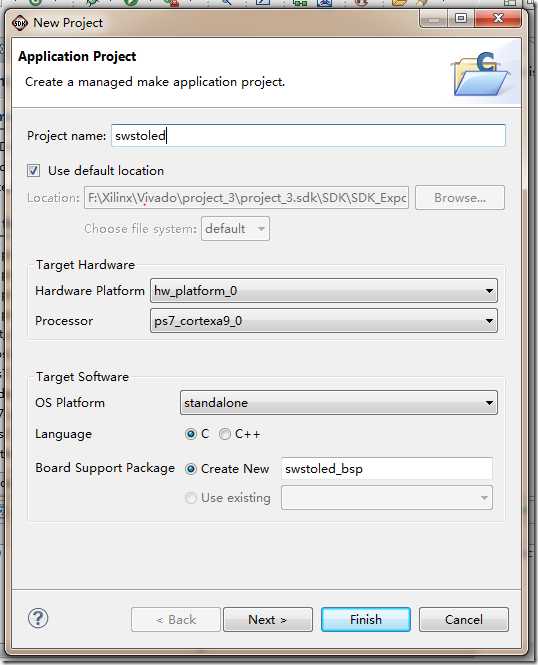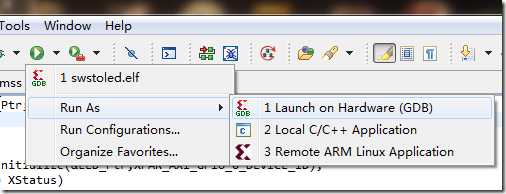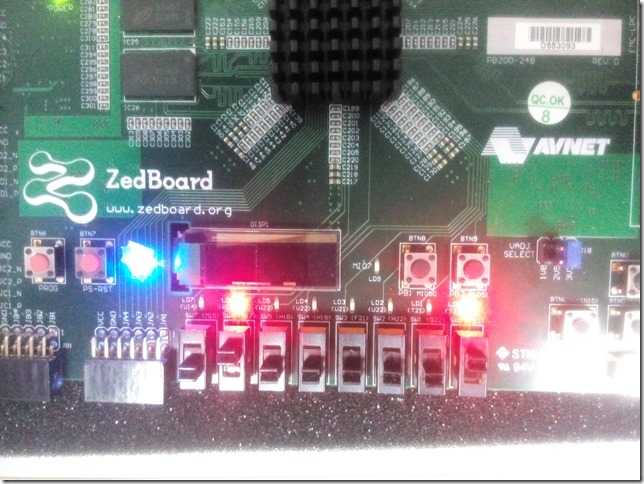实验 使用 vivado zedboard GPIO 开关 开控制 LED
前面我做了几个实验 都没有用过 开关,这一次用一用
发现 vivado 真的挺方便 所以 使用 vivado 开发
1.建工程
我使用 vivado 2013.4
创建新工程 –》 next –》next
勾选 Do not specify sources at this time //这样跳过后面两个添加文件页面
选择 board –》 zedboard –》next –》finsh
就创建完了。
2.PL端 IP核添加与连线
创建一个空的 Diagram
Create Block Design -》点 ok
接下来 添加 IP核 可以点击 提示 Add IP 也可以点击 ![]()
搜索 zynq 点 第一个
然后 点击 Run Block Automation 自动配置
接下来 会提示 Run Connection Automation 自动连线
选择 S_AXI 变成下图
系统自动添加了 一些IP核
继续点击 Run Connection Automation -》 GPIO
选择 led_8bits -》 OK
同样的方法 添加 GPIO IP核 -》 Run Connection Automation 两次 选择 sws_8bits
就完成了
点击 红圈处 验证 一下。
3.生成 bit 的过程
点击 Source -》 design_1 右键 –》 Create HDL Wrapper -》 OK
然后 Synthesis 、 Implementation 、Bitstream 依次过一遍
这个过程费时间。。 Synthesis 以后 一直点ok 最后 点击 Generate Bitstream
4.输出到SDK
选上 launch SDk 点 OK 就启动SDK 了
我的 SDK 是
点击 FILE –》 new –> Application project
选一个 helloworld
复制以下代码
1 #include <stdio.h> 2 #include "platform.h" 3 #include "xparameters.h" 4 #include "xgpio.h" 5 #include "sleep.h" 6 #include "platform.h" 7 #include "xil_types.h" 8 #include "xgpiops.h" 9 10 11 /************************** Constant Definitions *****************************/ 12 13 /* 14 * The following constant maps to the name of the hardware instances that 15 * were created in the EDK XPS system. 16 */ 17 #define XPAR_LEDS_ID XPAR_AXI_GPIO_0_BASEADDR //AXI_GPIO_0 是添加的第一个 gpio 所以是 leds 18 #define XPAR_SWS_ID XPAR_AXI_GPIO_1_BASEADDR //那么 这个自然是 开关了 19 20 int main() 21 { 22 static XGpio LED_Ptr;//定义GPIO指针 23 static XGpio SWS_Ptr; 24 int XStatus; 25 int num = 0; 26 //初始化 LED 27 XStatus = XGpio_Initialize(&LED_Ptr,XPAR_AXI_GPIO_0_DEVICE_ID); 28 if(XST_SUCCESS != XStatus) 29 print("GPIO INIT FAILED\n\r"); 30 XGpio_SetDataDirection(&LED_Ptr, 1,0x00);//通道1;设置方向 0 输出 1输入, 0x00表示8位都是输出 31 XGpio_DiscreteWrite(&LED_Ptr, 1,0x00); 32 33 //初始化 开关 34 XStatus = XGpio_Initialize(&SWS_Ptr,XPAR_AXI_GPIO_1_DEVICE_ID); 35 if(XST_SUCCESS != XStatus) 36 print("GPIO INIT FAILED\n\r"); 37 XGpio_SetDataDirection(&SWS_Ptr, 1,0xFF);//通道1;设置方向 0 输出 1输入 0xFF表示8位都是输入 38 39 40 41 while(1){ 42 num = XGpio_DiscreteRead(&SWS_Ptr, 1); //从开关处 读数据 43 printf("Numb %d\n\r", num); 44 XGpio_DiscreteWrite(&LED_Ptr, 1,num); //直接写入 led 45 usleep(1000); //delay 1ms 46 } 47 48 printf("end\n\r \n\r"); 49 return 0; 50 }
确保 zedboard 已经连到电脑上 并打开电源
先 xilinx Tools –> ProgramFPGA
然后 ![]() -> Run As –> Launch on Hardware (GDB)
-> Run As –> Launch on Hardware (GDB)
可以看到 结果 64 + 1
第 7 个 和 第 1 个 开关 是开的
表示 所以 led 也亮了

